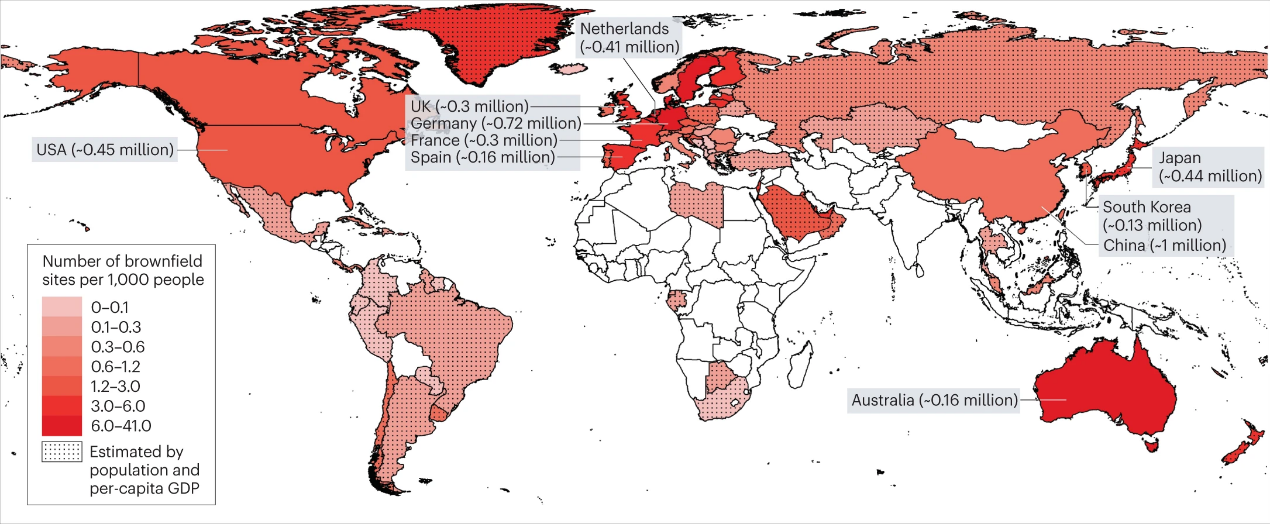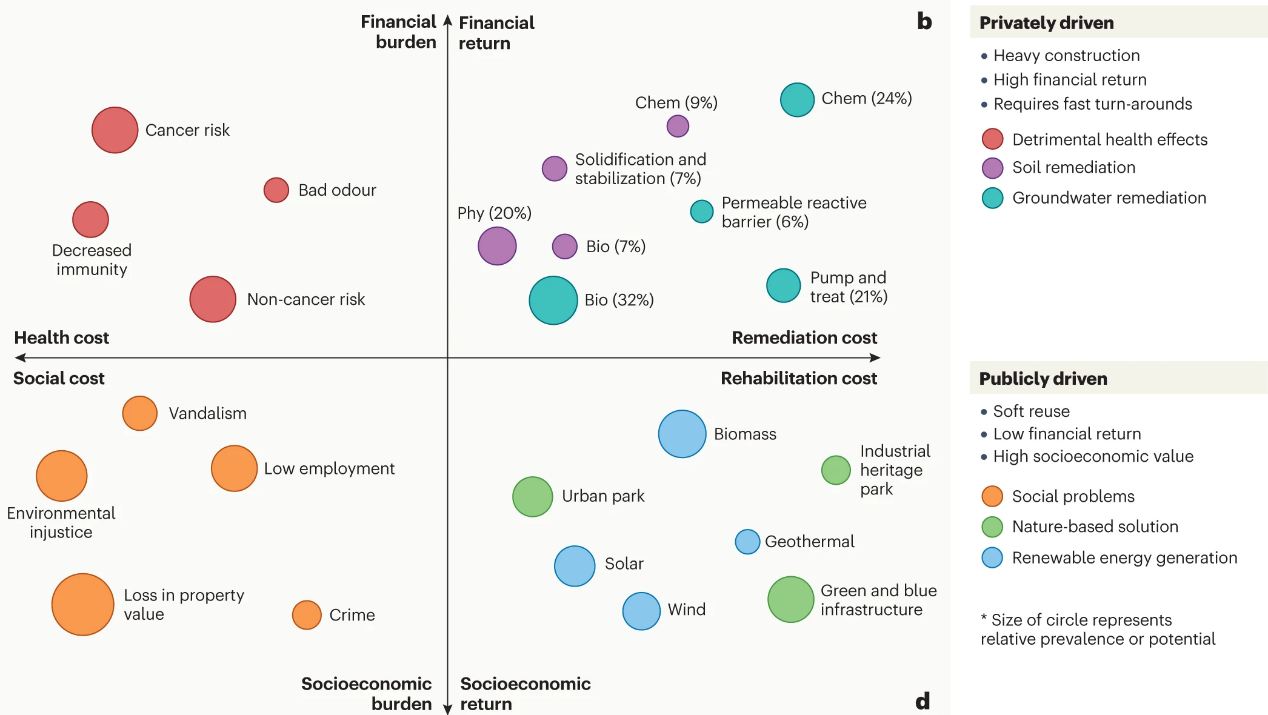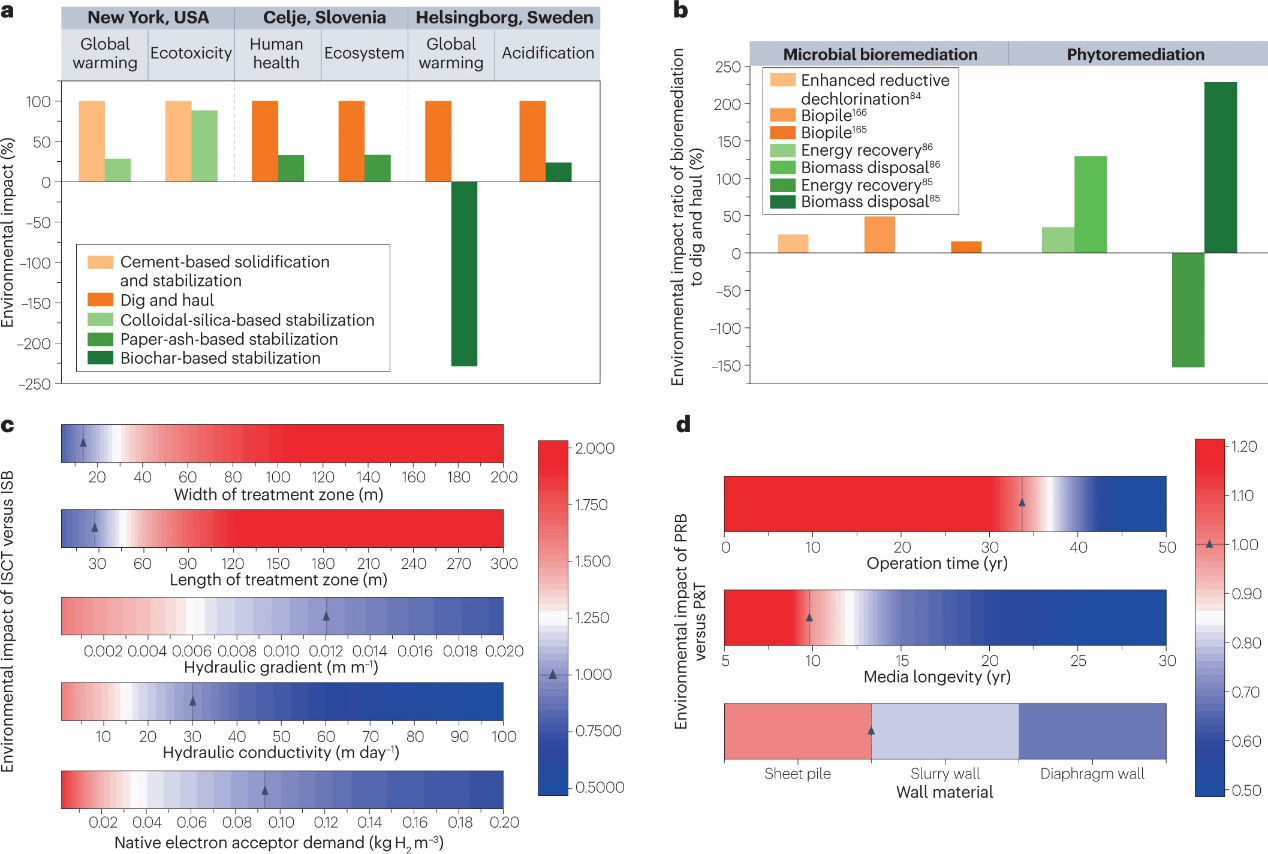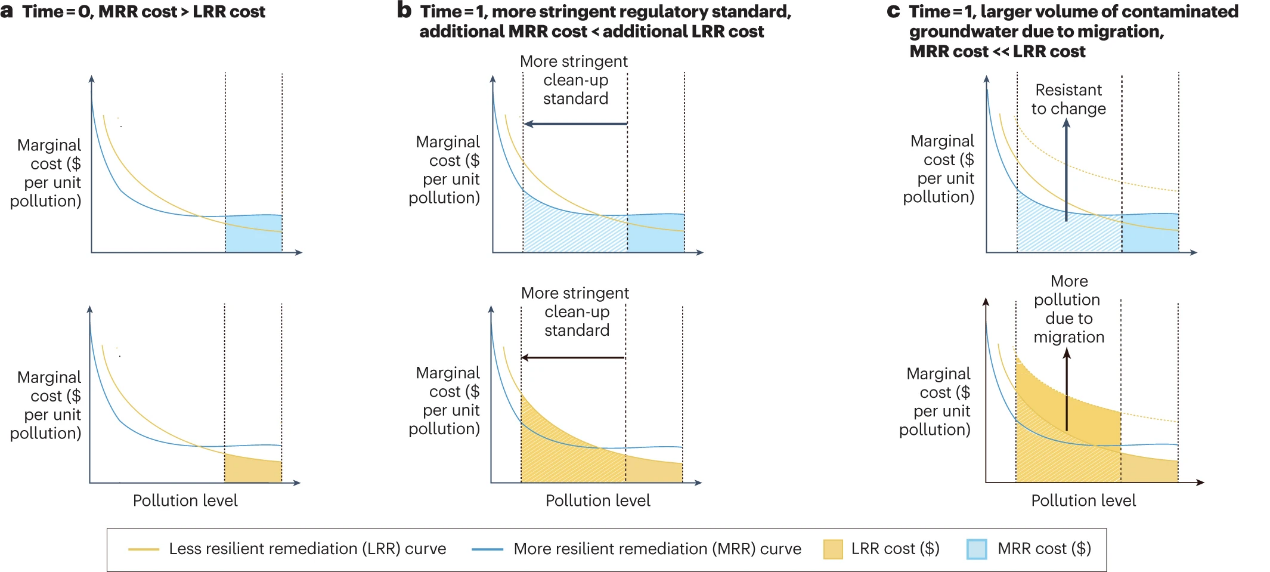Preventing and controlling soil and groundwater pollution is a significant national imperative within the current context of ecological environmental protection. Based on years of research, Professor Hou Deyi's team at the School of Environment, Tsinghua University, systematically summarized the challenges in the remediation, management, and redevelopment of contaminated industrial sites, commonly known as “brownfields”. They have developed an assessment framework for systematically analyzing the environmental, economic, and social impacts throughout the entire life cycle of remediation. The team has proposed four sustainable remediation technologies and optimized paths for two coupled strategies of remediation and redevelopment, offering a roadmap for the future development of green and sustainable remediation research.
The increasing prevalence of soil and groundwater pollution from industrial sites around the world poses a significant threat to food security, drinking water safety, and dwelling security. This study is based on pollution site information from nearly 40 countries and regions. It establishes a quantitative relationship model between potential pollution sites and economic scale, population density, etc. For the first time, it estimates the number of "brownfields" to be over 5 million in the world (Figure 1). Industrial site pollution not only exacerbates environmental issues such as soil and groundwater contamination but also gives rise to problems such as crime, unemployment, and community injustice associated with land vacancy or improper use. Consequently, this significantly constrains the developmental potential of urban areas.

Figure 1: Global Distribution of Brownfields
Remediating industrial sites can cleanse polluted soil and groundwater, enhancing urban ecosystem services and supporting sustainable development and industrial city revitalization. However, traditional methods often involve high costs, intense energy and resource use, and high environmental and carbon footprint. Poorly managed projects may lead to secondary pollution, impacting nearby residents and communities. The high costs and uncertainties make many "brownfields" hindrances to urban development. The study emphasizes that the remediation and redevelopment of industrial sites require a consideration of the coordinated impacts of environmental, social, and economic factors. Environmental impacts can be categorized as primary, secondary, and tertiary effects, corresponding to the impacts caused by the pollutants themselves, the remediation process, and the subsequent reuse of the remediated site, respectively. This study conducts an environmental footprint analysis throughout the life cycle of remediation, considering both primary and secondary impacts. Additionally, it introduces a two-dimensional framework (Figure 2) integrating various indicators for the societal and economic sustainability of "brownfield" governance. Analysis indicates that urban "brownfields" can cause a range of impacts on human health and society. Sustainable governance, remediation, and redevelopment of these areas can effectively alleviate various socio-economic pressures and transform them into new opportunities for urban development.

Figure 2: Two-Dimensional Analysis Framework for the Economic and Social Sustainability of "Brownfield" Governance
This study systematically analyzes four sustainable techniques for remediating contaminated soil and groundwater: Solidification/Stabilization remediation using green low-carbon materials, in-situ bioremediation based on plant-microbe interactions, in-situ chemical oxidation-reduction technology employing green and efficient reagents, and risk control technology using highly selective permeable reactive barriers with green materials. By incorporating low-carbon or carbon-negative functional materials and coupling physical, chemical, and biological processes, these sustainable remediation technologies achieve efficient mass transfer and long-term remediation while avoiding highly disruptive ex-situ remediation methods. Sustainable remediation technologies can achieve a 50% to 80% reduction in greenhouse gas emissions (Figure 3) while enhancing soil health and restoring ecosystem functions.

Figure 3: Quantitative Comparison of Environmental Impacts Between Sustainable Remediation Technologies and Traditional Remediation Technologies
The study indicates that the effective integration of the remediation process with subsequent redevelopment is crucial for achieving sustainable site management over several decades. Adopting nature-based solutions, which involve the coupling of biomass, solar energy, wind energy, and other renewable energy sources, to construct a resilient approach to brownfield remediation and redevelopment, is key to enhancing environmental, social, and economic sustainability. In the context of global change, resilient industrial site remediation not only needs to meet the increasingly stringent standards imposed by societal development but also has to address the long-term dispersion and migration of site pollution caused by global changes (Figure 4).

Figure 4: The Impact of Changes in Social and Geophysical Conditions on the Marginal Costs of Remediation and Management Models.
On March 28th, the research findings titled "Sustainable Remediation and Redevelopment of Brownfield Sites" were published in the international academic journal "Nature Reviews Earth & Environment." Professor Hou Deyi from the School of Environment, Tsinghua University served as the first and corresponding author, with co-authors including Professor Al-Tabbaa from the University of Cambridge, Professor Hu Qing from Southern University of Science and Technology, Academician Zhu Yong-Guan from the Institute of Urban Environment, Chinese Academy of Sciences, Professor Kirkwood from Harvard University, among others. The study received support from the National Key Research and Development Program of China: Causes and Control Technologies of Site Soil Pollution, and the National Science Fund for Distinguished Young Scholars from National Natural Science Foundation of China.
Link to the paper: https://www.nature.com/articles/s43017-023-00404-1





